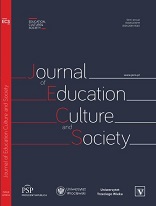POSTCOLONIAL TENDENCIES IN TRANSLATION IN THE LIGHT OF CENTRE-PERIPHERY PRE-CONCEPTUAL IMAGE SCHEMA
POSTCOLONIAL TENDENCIES IN TRANSLATION IN THE LIGHT OF CENTRE-PERIPHERY PRE-CONCEPTUAL IMAGE SCHEMA
Author(s): Patrycja KarpińskaSubject(s): Language and Literature Studies, Theoretical Linguistics, Translation Studies
Published by: Fundacja Pro Scientia Publica
Keywords: postcolonialism;foreignization;domestication;pre-conceptual image schemata;centre;peripheries;
Summary/Abstract: One of the main characteristics of translation is that it can be called everything but stable; multiple cultural, social, political, and economic processes are reflected in translation. Postcolonial studies in translation deal with, among others, cultural and linguistic hegemonies as well as strong and weak – or central and peripheral – cultures and the relations between them. Many of the theories (Even-Zohar, 1979; Tymoczko, 1999) state that strong cultures set an example whereas weak cultures attempt at following this example, even at the cost of their own values and culture (so-called foreignization in translation). It is significant to ask oneself why such processes take place. The investigation of the pre-conceptual image schemata of CENTRE-PERIPHERY and PLUS-MINUS polarity of the SCALE sheds some light on the nature of these interactions (Krzeszowski, 1997).
Journal: The Journal of Education, Culture, and Society
- Issue Year: 7/2016
- Issue No: 2
- Page Range: 328-339
- Page Count: 12
- Language: English

